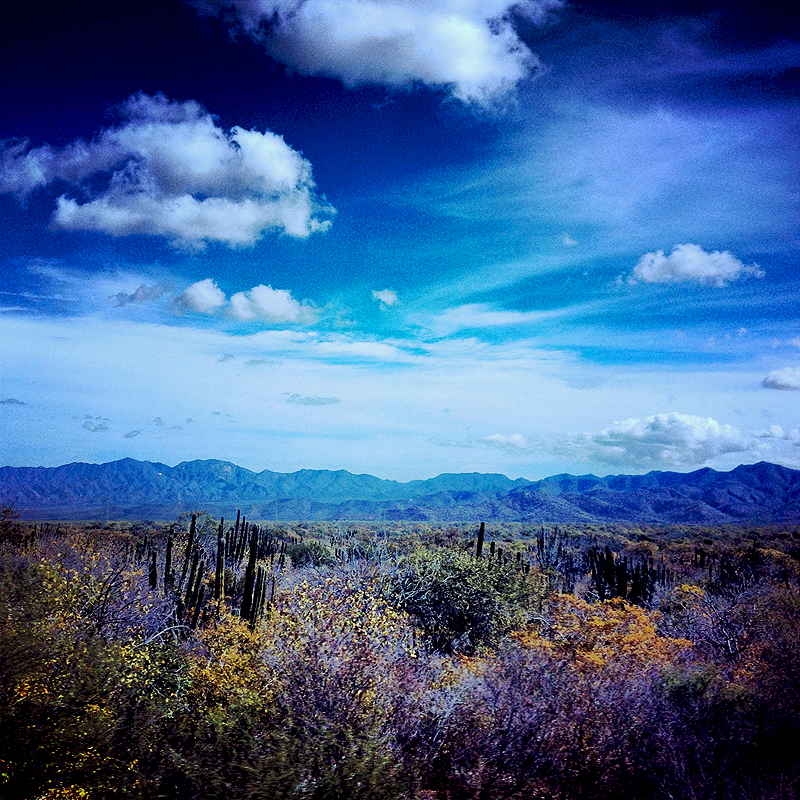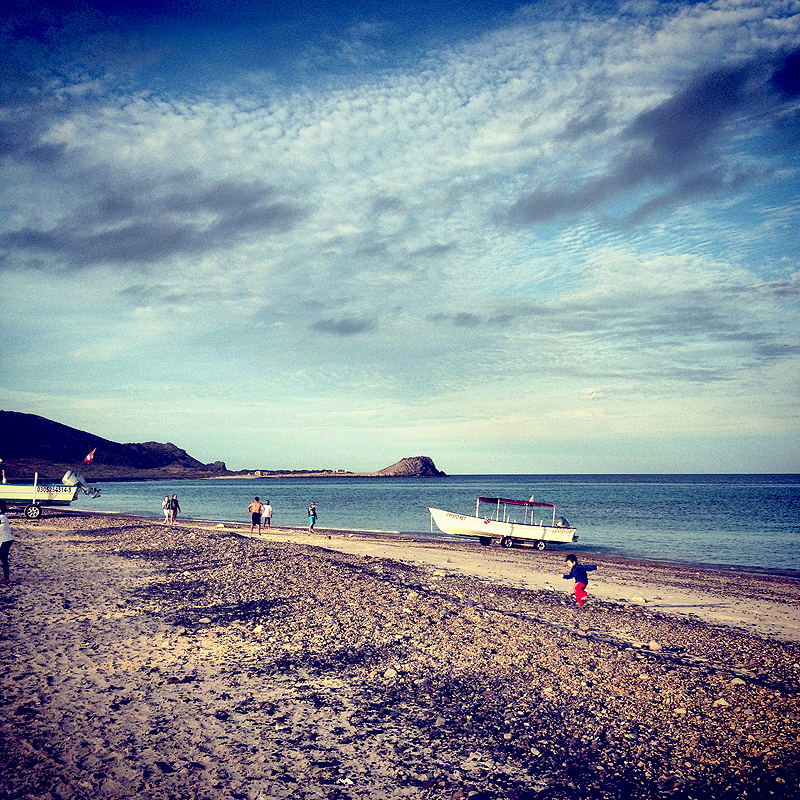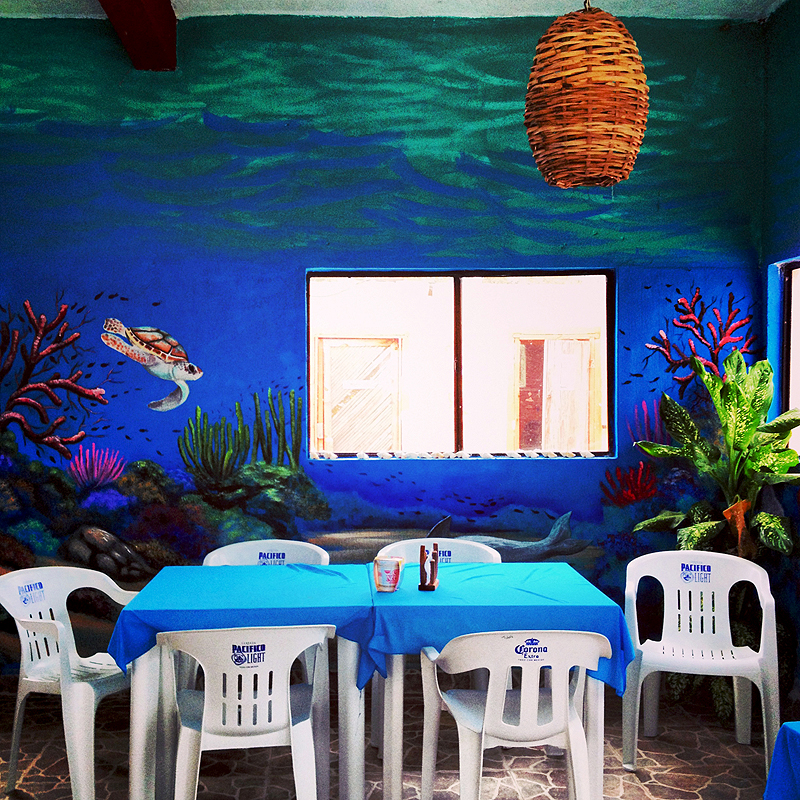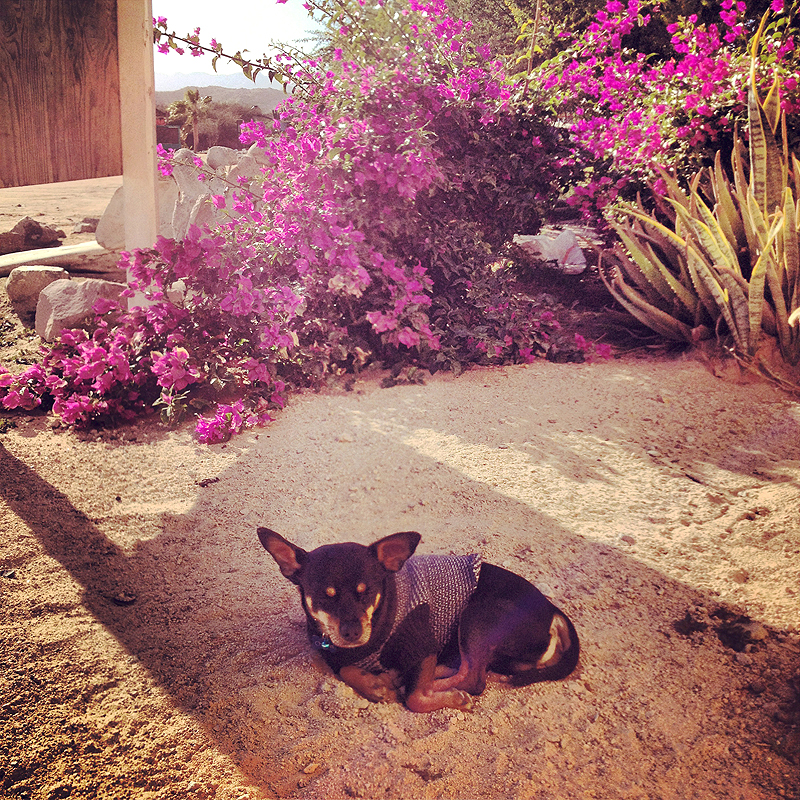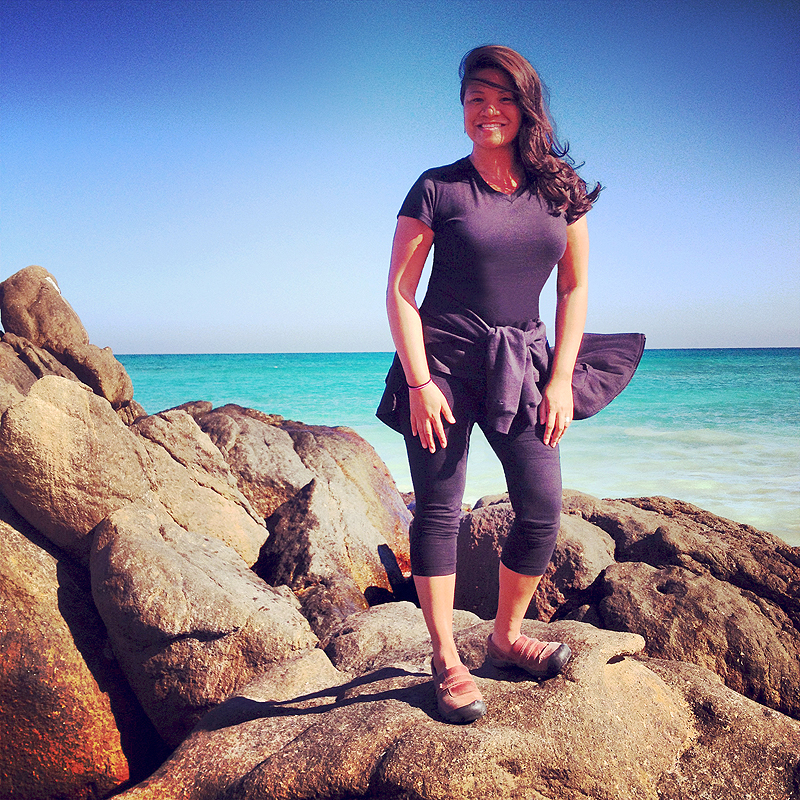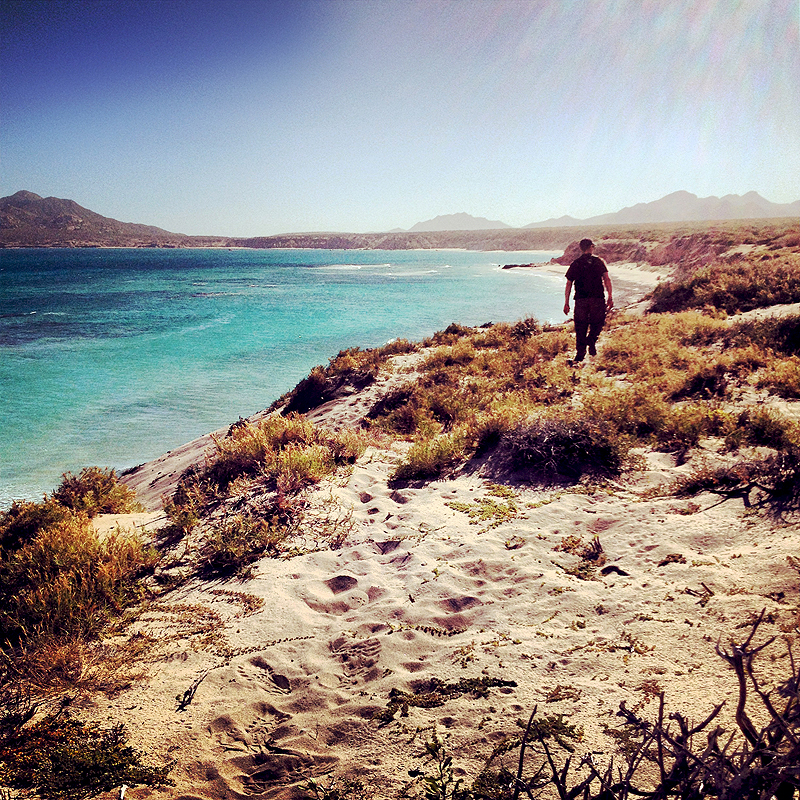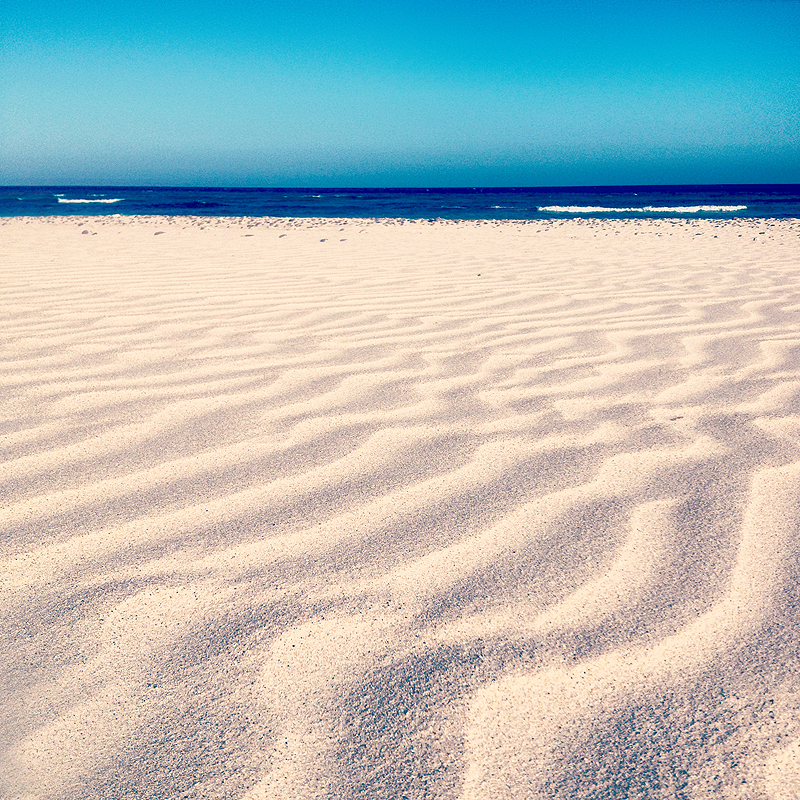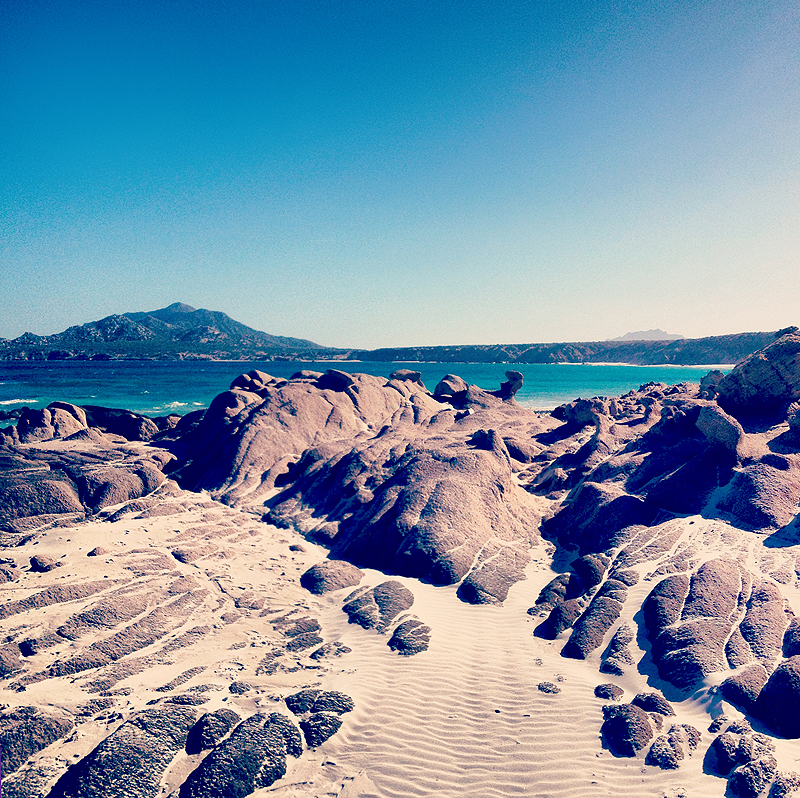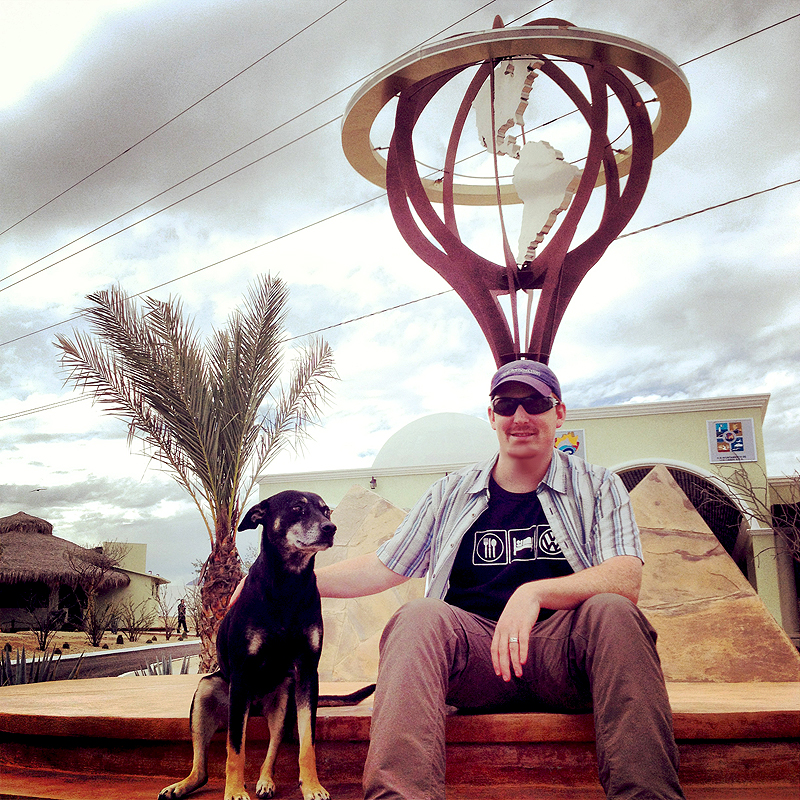CABO PULMO
“Muchas ballenas”, Carlos glanced at us over his shoulder, pointing at the hazy, blue horizon.
“Lots of whales,” I said, turning to Tor, who was hunched forward, peering out the windshield.
The truck gunned sharply up a hill and barreled around a curve. Below, there lay only rugged coast. No houses, yet, no towns or hotels. Only a craggy line of peaks in the distance that flared down into a blanket of desert. Desert that rolled into cliffs. Cliffs that rose, fortress-like above the jade hem of the Sea of Cortez.
As we slowly rolled down the hillside and into town, we observed the quiet streets with curiosity. This was the Mexico of my mind, dusty and sun-baked, cacti with bursts of bright flowers, rugged scrub land and mountains looming like moody warlords in the distance. Roosters strutted across the road and a pair of cows chewed sleepily. An elderly man sat in the partial shade of a hibiscus bush, smiling good-naturedly at passersby.
We climbed the steps of the bright, blue Dive Center. It was there, from the palapa-roofed restaurant that we again caught a glimpse of the sea. It was startlingly close, the water shimmering like peacock feathers in the bright sunlight. We found an empty table and sat, steeped in a distinct, satisfying silence. Already, I could feel the humid, salty air beginning to do its work, soaking my thirsty skin, falling like a healing mist in my hair, my eyes and at the nape of my neck.
*






